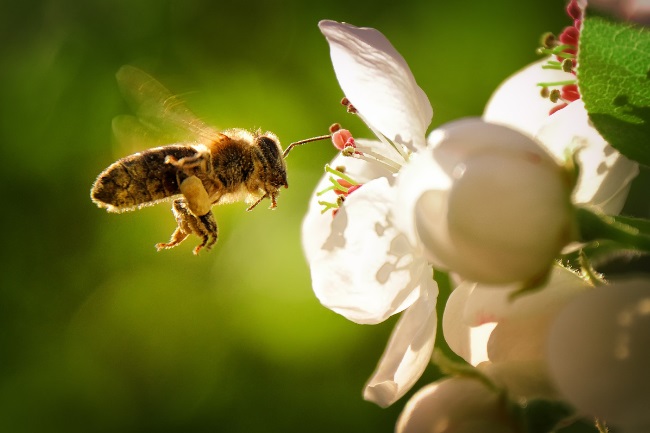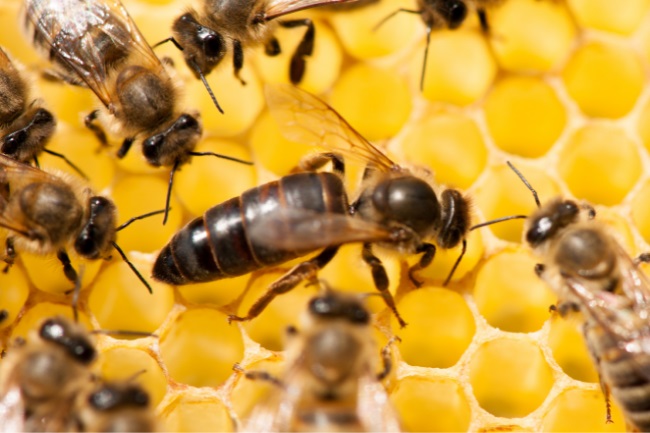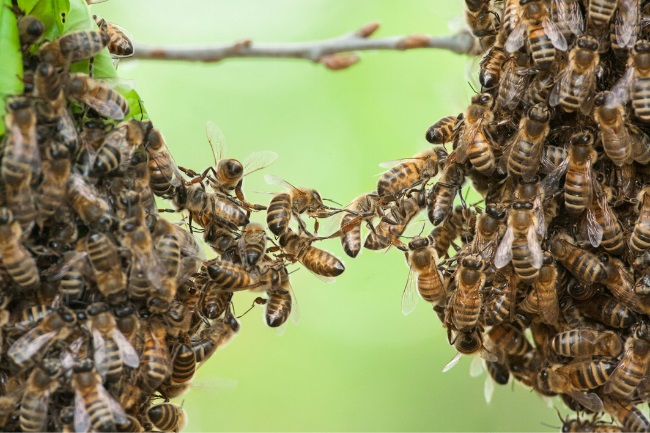The queen is an essential part of honey bee society. She produces the eggs that keep the hive supplied with workers, who then go out and collect pollen. When she dies, the hive workers must quickly create another queen, or the hive will fail.
Contents
What does a queen bee do?

Queen bees are the heart of a bee colony. Not all species of bees have queens, but some, such as bumblebees and honey bees, do. Honey bees are famous for their complex social system, with a queen being doted on by an entourage of workers and drones. The majority of the hive is comprised of females, as all workers bees are female. However, only the queen lays eggs. She exudes pheromones that prevent the other worker bees from being able to produce young.
| Bee Role | Description |
|---|---|
| Queen Bee | The queen bee is the only reproductive female in the colony. She lays eggs and leads the hive. |
| Worker Bees | Worker bees are female bees that perform various tasks such as foraging, nursing, and cleaning. |
| Drone Bees | Drone bees are male bees whose sole purpose is to mate with a new queen. |
Worker bees will only live for around five to six weeks, meaning that the queen needs to constantly produce more offspring. She can lay approximately 1,500 eggs a day, an astonishing feat for such a tiny creature. A queen’s life begins just as that of all the other larvae. It is the workers that get to decide which of these larvae will be crowned and which will go about their life as usual.
They prepare a larva for the throne by moving it into a special queen cell. Unlike the famous honeycomb cells we are all familiar with, a queen bee cell hangs vertically. The workers then feed this larva on large quantities of royal jelly. Once the queen hatches, she will leave the hive to look for a partner. This is the one time she will mate in her life.
On a hot sunny day, she flies out of the hive and travels to a drone congregation site. Here large numbers of drones swarm together, often at sites that have been used for decades. She will fly quickly through, and the fastest drones will get to mate with her. She will then return to her hive to take up her rule, using the sperm she’s carrying to fertilise her eggs for as long as she lives.
Also read: When, How & What do Queen Bees Eat? (Explained)
Why would a queen die?

Queens can die for many reasons, either from old age, disease, or they can even be killed by their own workers. In most cases, though, she will significantly outlive her subjects, ruling for two to three years.
Yet, she doesn’t have an easy start in life. The workers often raise more than one queen at a time. This means the young queens must fight to the death for the throne, as only one can rule a hive at a time.
What happens when a queen bee dies?
When a queen dies, the hive can go into disarray. At this time, the workers can be more aggressive and agitated. Without the queen’s pheromones to control their reproduction, female workers can begin producing young. However, as they are unfertilised, these larvae will all be drones.
What the workers need is another queen. To achieve this, they will select a larva and move it into the royal chamber. This larva will be fed on royal jelly, which despite its name, is provided to all other larvae as well. The difference for the queen larva is the amount it is fed. By eating large amounts in a very short time this triggers morphological changes in the young bee, and she emerges from her cell very different from her worker companions, most noticeably larger.
| Event | Description |
|---|---|
| Emergency Cells | Worker bees detect the absence of a queen and create emergency queen cells to raise a new queen. |
| Queen Succession | The first new queen to emerge kills any remaining queen cells and takes over as the new queen. |
| Colony Behavior | The behavior of worker bees may change, and they may exhibit swarming tendencies or decreased productivity without a queen. |
If, for some reason, the hive can’t produce a new queen, then eventually it will die. Workers will slowly fall in numbers, and with no new young being produced, the hive will soon no longer function.
Also read: Would the Extinction of Bees Mean the End of Humanity?
What is a swarm?

A swarm is formed when there is more than one queen in residence. This often happens when the colony gets too large or when certain environmental conditions encourage the bees to swarm.
Before getting ready to leave the hive, workers will build queen cells, feeding up a new royal larva. Once the queen is all grown up, she will leave, taking around half the swarm with her. The bees aren’t aggressive in this state, but they can often alarm people as they turn up in odd places, such as bins, trees or even just sitting in the road.
The swarm will look to find itself a new place to nest, such as a hollow tree, unless scooped up by a trained beekeeper to live in an artificial hive.
Also read: Why do Bees Sting? What Happens After? (Explained)
Royalty is nothing without the commoners
We might think of the queen as the head of the hive, but without the workers, she’s really got nothing to rule. The workers go out and collect the pollen, they rear the young, and they defend the hive.
We tend to think of social species as having a hierarchical society, but in fact, there is a certain amount of equality and interdependence within the hive. Undoubtedly the queen rules, but the workers put her on the throne and allow her to stay there. And when they are fed up, they simply feed up a brand new queen and head on out to establish a bright new kingdom.

